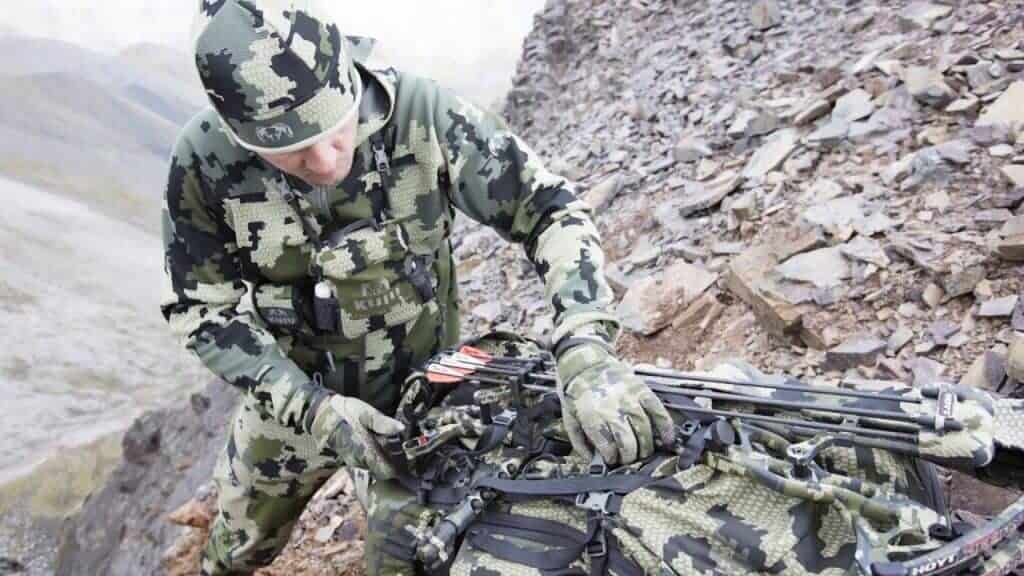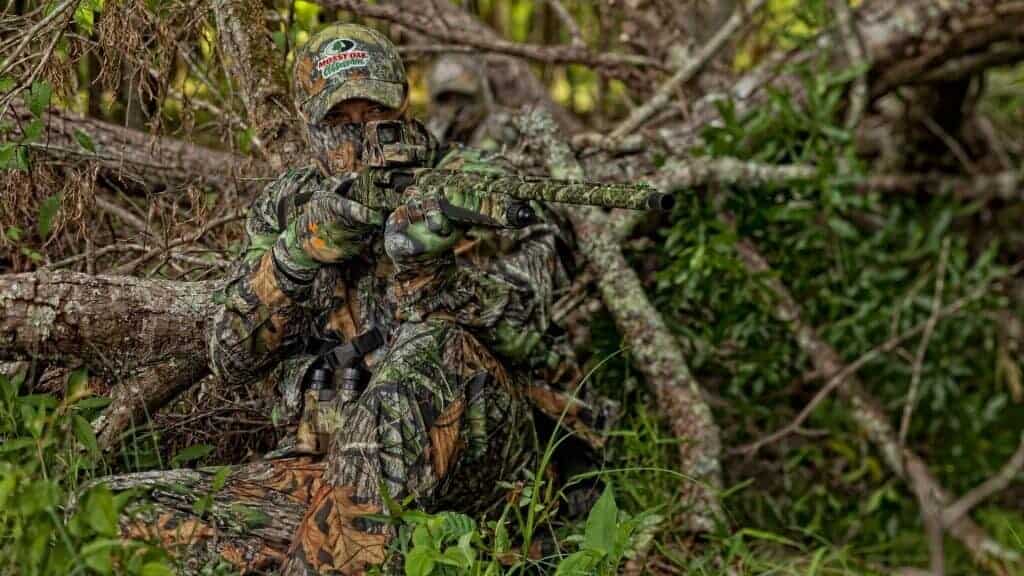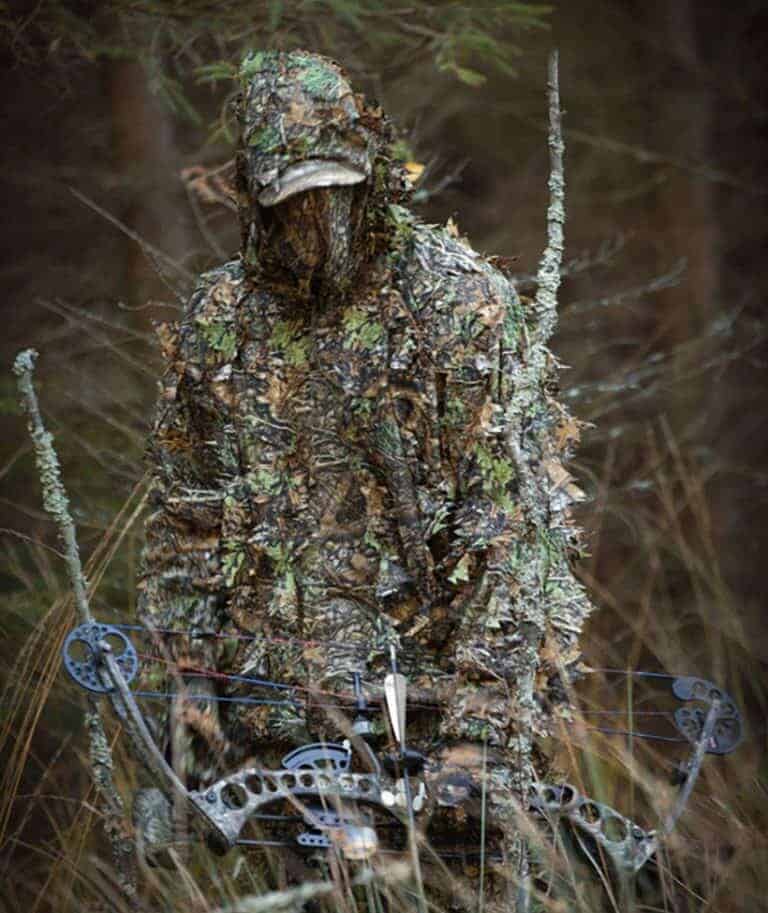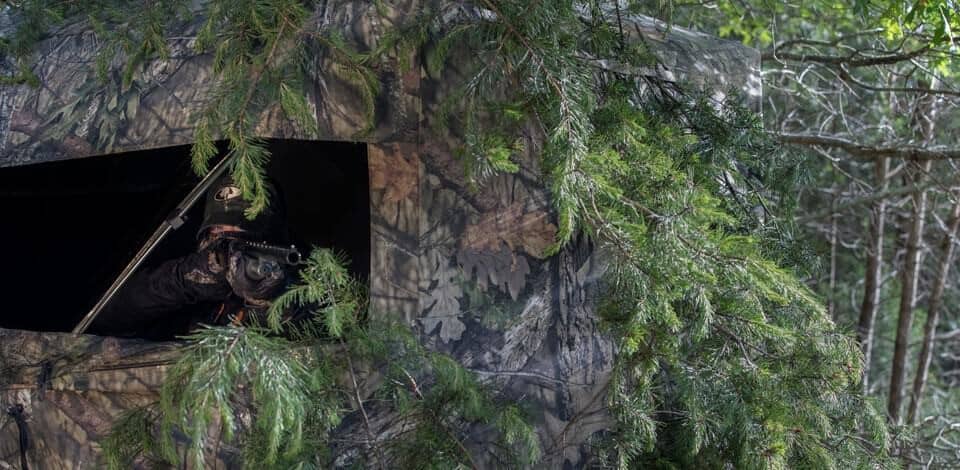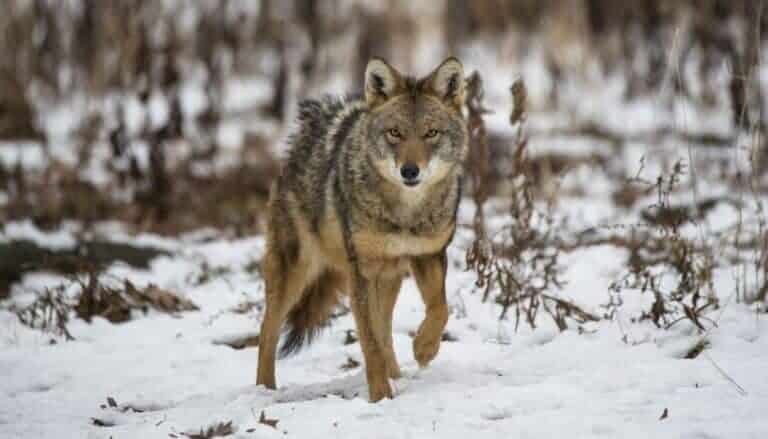Recently, the world of camouflage has become so complicated and centered around making money. Tons of brands are selling their own patterns or licensed patterns of camouflage on expensive clothing. It comes to a point where you are only paying for a name and not for something that is going to keep you concealed better. Not to mention that you can buy the exact same clothing but in an everyday color for much less. So the question arises, do you need camouflage for hunting, and if so, to what extent?
In general, camouflage works well and it does help to wear it, but it is not a requirement. Nowadays most camouflage is made for human eyes instead of animal eyes. Many hunting brands try to normalize the newest and most exciting products available so we will buy them. However, you do not need a full $1000 suit of the same pattern and brand to hide from any type of game. Although there is a line at which you are paying for the quality of the material or product, once you get past the quality, it is all in the name.
RELATED POST: HOW TO STAY WARM ON A COLD HUNT
Overly Expensive Gear
Just think about how much these brands charge versus how much you actually use your hunting clothes. Most hunters may wear their camouflage around 30 days of the year if they are serious. Getting in the woods can be hard to do when you are working full time and have kids to take care of. So if you already do not spend a ton of time in the woods, why break the bank on one brand that does not work any better than a cheaper one?
Most hunters that buy that gear do it because it looks nice and has a respectable name, or because they saw a big name hunter online or tv talking about how great it is. There is no doubt that in most cases expensive gear is nice; however, it is not really worth it. Just because your buddies are impressed by your $400 hunting jacket, does not mean that the deer will not see you picking your nose in your tree stand.
What’s Really Important | Movement
Whether or not you are wearing top of the line gear or 3rd generation hand-me-downs, controlling your movement is the key to being a successful hunter. Even if you are concealed as well as a military sniper, if you fidget around all the time, you will be seen. If you can become reasonably good at staying still and moving slowly in the stand, it really does not matter what you wear if you are deer hunting. For decades hunters have worn normal clothes out into the woods and returned with an animal.
However, if you are well concealed with camouflage, you can get away with a little more movement. The moral of the story is, camouflage is not a prerequisite to successful hunting. You honestly do not even need it, but it certainly helps, especially if you are hunting animals with good eyesight like predators or birds.
What Camouflage is Good For
The best thing about camouflage is that it breaks up your human silhouette. Even with limited movement, if you are not wearing camouflage or are wearing solid colors, you will have a silhouette that keen-eyed animals can spot easily. This is why we use camouflage that has funky patterns. They break up what is around us and help us blend into the environment better.
This is why a lot of hunters wear 3D camouflage. Not only does 3D camouflage break up your pattern like normal camo, but it also goes outside of your silhouette to break up straight lines that your body has, like your legs or arms. Plus 3D camouflage gear also moves with the wind, making you look even more natural.
Another thing that keen-eyed animals see is our shiny skin. Especially in people with lighter complexions. Our faces and hands are easily picked out of an ocean of green and brown by animals like turkey and waterfowl. Their eyesight is so good, that it is fairly hard to get past them without covering up most of your skin. Most of the time you can get away with leaving your face and hands uncovered while deer hunting, but I have mine covered most of the time just because of how cold it is during the rut. You can either use face paint to mix up the colors of your face or use a face mask of some sort. I hate using face paint because it is a mess, and I can easily slip a facemask on or off whenever I need or want to.
Types of Camouflage
While standing in an aisle looking at dozens of different types and patterns of camouflage, how do you pick the best one for your location? It all depends on how you want to camouflage yourself. Do you want to break up your outline and disappear, or blend in with your environment? Do you want to look like a military sniper, or be able to get away with a little extra movement in the stand? Different types of patterns can help you achieve these different goals.
We have break-up patterns that, as the name would suggest, break up your outline and help you disappear into the environment. The next type of camouflage is mimicry. This type of camouflage mimics the environment to make you blend in with that specific environment. Lastly, we have 3D camouflage. Which can be the ultimate concealment, although it can be difficult to deal with.
Break-up Patterns
Break-up patterns are what most people think of when they think of camouflage. This type of camouflage has been used for decades in the military. Today’s digital camouflage and even patterns dating back to the Vietnam War fall into this category. One advantage these patterns have over others is that with its ability to help you disappear into the environment. This makes your movement harder to detect than it would be if you were wearing a mimicry pattern.
Instead of trying to match the terrain exactly, many companies create patterns that focus on breaking up the human outline. Break-up patterns are designed in such a way that they help you disappear into the environment, and not so much to make you look exactly like it. Typically these patterns will consist of a variety of larger solid colors that are splotched or blocky in their layout.
In recent years, blocky break-up patterns have become much more popular. A few big brands have started to use them in a signature way, making blocky break-up patterns a crucial part of their brand identity. With the success of these companies, more people are wearing break-up patterns either for the pattern itself or for the name on the front of it.
Terrain Mimicking Patterns
A very popular type of camouflage is a mimicry pattern. These camos are designed to mimic specific types of terrain. Ideally, they help you match more closely with the terrain. They are also great at allowing you to get close to prey. Truthfully these patterns look really good to the human eye and can definitely help conceal you in the woods, but they have their downsides.
If you buy mimicry patterns for a specific type of terrain, how will it look when you want to hunt in a different terrain? Are the colors and patterns going to be so unique that you will stand out in a different terrain? It all depends on what you buy, but personally, I would not try to buy camouflage that matches my terrain exactly. By that logic, you would need a different wardrobe for every place you hunt! That would get expensive very quickly. Instead, buy a general mimicry pattern, something like forest green instead of a fall white oak pattern. The broader the pattern, the more often you can use it. Plus the difference in detail between broad patterns and specific ones will have minimal or no effects.
Another con about these mimicry patterns is how detailed some of them are. While you are standing in that aisle admiring how detailed the tree limbs and leaves look on some cool looking camo, keep in mind that most animals can not see the fine details that we can. For example, deer may be able to see far away and nearly 250 degrees around them, but they cannot focus their eyesight very well. Your super detailed pattern is going to look like a blur of brown or green.
3D Patterns
3D Patterns are most likely the best camouflage there is for remaining unseen; however, at times it can be too much. 3D Camouflage takes it to the next level by adding in material that sticks out past your outline. Most of the time these camos will have things like synthetic 3D leaves or grass as part of the pattern. The downside of these camouflages is that they can be cumbersome.
A lot of times all that extra material can get stuck on whatever you are walking by. So this is why if you are moving around a lot, you should probably not use 3D camo. Also, most wild game cannot see you well enough to require you to use a full 3D suit. Other break-up or mimicry patterns are more than enough to keep you concealed.
While 3D camouflage looks pretty cool to us, your movement may be limited due to the fact that you will be moving around all those leaves with you. Although if you are stationary during your hunt 3D camouflage may be the golden ticket to staying concealed.
I have a basic leaf top and bottom that I wear from time to time. It is not a ghillie suit but more like a sleek net of leaves. I love to wear it over a dark-colored t-shirt when it is hot. During the 2019 season, it was my go-to camouflage during the 90 degree North Georgia bow season.
Other Ways of Concealing Yourself
Camouflage is not the only way to conceal yourself. You can use plenty of other strategies to stay hidden. Like hiding in box blind overlooking a field with a heater close to your feet, or you could add burlap and other concealments to your tree stand to hide more of your movement. You could also use the natural terrain to your advantage in a near-infinite amount of ways, like spot and stalking game behind cover, or brushing in a ground blind with the surrounding vegetation. If you can use these factors on top of camouflage, you will be very difficult to see.
So What Camouflage Should You Wear?
With all these options, what type of camouflage should you wear? Well, it depends on what you are hunting and how good that animal can see. Although you should still keep in mind that camouflage is just one small aspect of staying hidden. You have to control your movement and use your surroundings to your advantage. So here are my suggestions based on different types of game, although there are not really any wrong answers when it comes to camouflage. Most if not all patterns will work at any time.
Whitetail Deer & Other Cervids
For animals in the Cervidae family, like deer, elk, or moose, you do not really need to worry about having detailed camouflage. Thousands of hunters have harvested these animals without any camouflage at all. You will be just fine with a basic breakup or mimicry pattern camouflage. The important thing for these animals is your movement. Learn to conceal or limit your movement and you will be successful.
Birds & Waterfowl
If you are hunting birds or waterfowl you actually have to make sure you are very well concealed. Animals in this category like turkey or ducks have excellent vision. While hunting them you generally want a mimicry pattern and make sure you are covering up your face and hands. Although it is important to use camouflage for these animals, movement is a huge factor. They are especially skittish and the slightest unwarranted movement can send them flying away.
Predators
Predators generally have good eyesight in the sense that they are able to intently focus on one area. These animals will be able to see the details of your camouflage if they are close enough to you, so you may want to try using mimicry or 3D patterns if you plan on getting close to them. However, if you are bear hunting from a distance on the mountain tops, you would do well with a break-up pattern.
Vermin
If you are hunting squirrels, you can really wear just about anything you want. They may see you but most of the time they will not run if you are not too close to them, so they are easy to pick off with a .22.
If you are hunting foxes or coyotes, camouflage becomes a little more important. These animals are fairly smart and can see pretty well, I would consider either a break-up pattern or mimicry pattern depending on how close you plan to get.
If you are hunting hogs, you can get away with wearing a minimal amount of camouflage. Maybe a camo top and a pair of jeans. Hogs do not see details very well but they do pick up movement. You should dress for the weather first and foremost when hunting hogs.
Conclusion
Like most things in the hunting world, people love to overcomplicate camouflage. Whatever camouflage you have is likely enough. The newest and most expensive gear is not going to help you be more successful. A lot of times you can get away without camouflage at all, however, camouflage does help to break up your outline and conceal your movement. While there are a few things that go into picking out a pattern, there are no right or wrong answers. Do not worry if you are wearing camouflage that is a few shades off, your game will never notice. The important thing is that you are able to control your movement. Your movement will be your first and biggest giveaway.
Thank you for reading my article about if you need camouflage to hunt. I hope you enjoyed it and learned something you didn’t already know. If you like my content, subscribe to my weekly update. If you have any other questions about camouflage or just want to connect, feel free to email me at Patrick.Long@omegaoutdoors.net.
Sister Post | The Key to Staying Warm on a Cold Hunt
A sister post is another post that I have written that follows along with the same topic as the one you just read. I think that following this post, my post about how to stay warm on a cold hunt will provide a lot of value and may teach you something new.
Hunting is a year-round pursuit. For many, when it comes to those cold winter months a decision has to be made on whether to brave the elements or to stay at home in front of the T.V. For those who do venture out, the reward can far exceed the effort… Keep Reading
Preparation | Wearing the Right Clothes
There is an art to getting dressed when heading out to hunt in cold weather. Many of us will do it without even knowing. The secret is… Keep Reading
Keeping the Head, Hands, and Feet Warm on a Cold Hunt
The key to keeping your head warm is to cover exposed parts of the face. Typically, this is the nose and ears. This can be done by… Keep Reading

